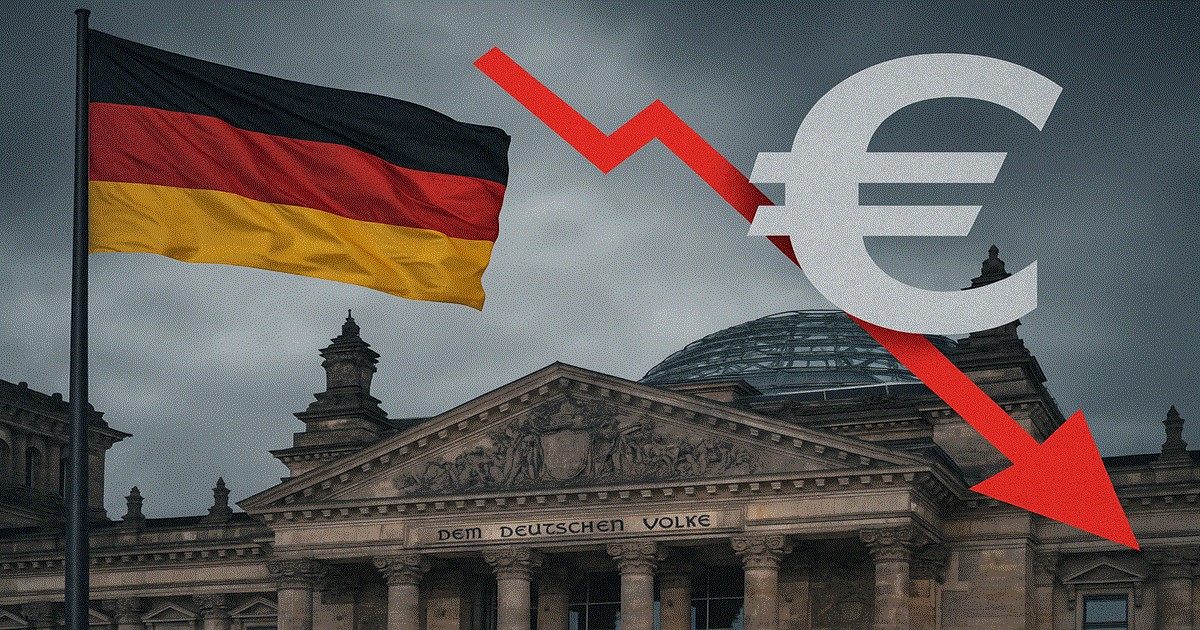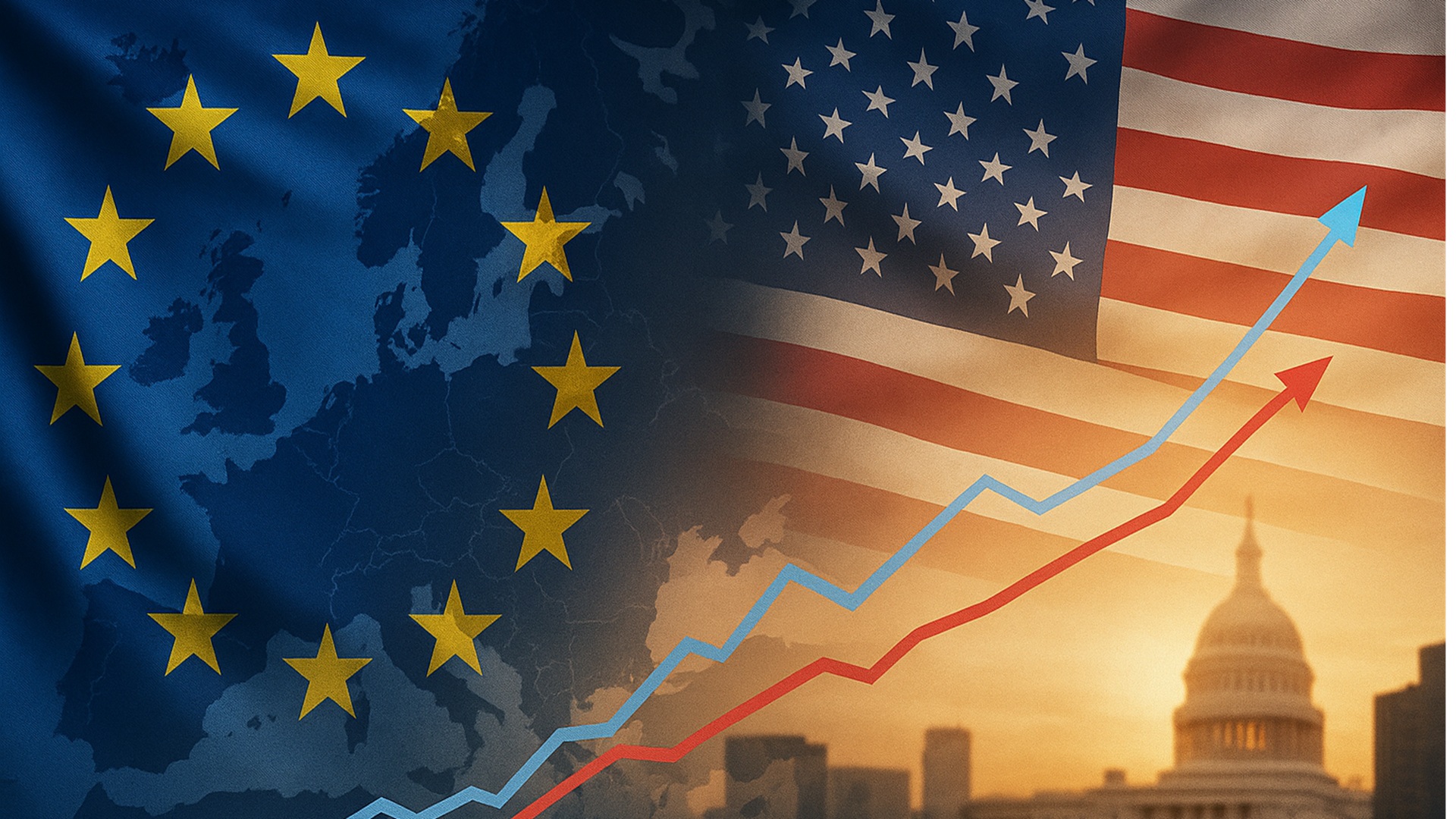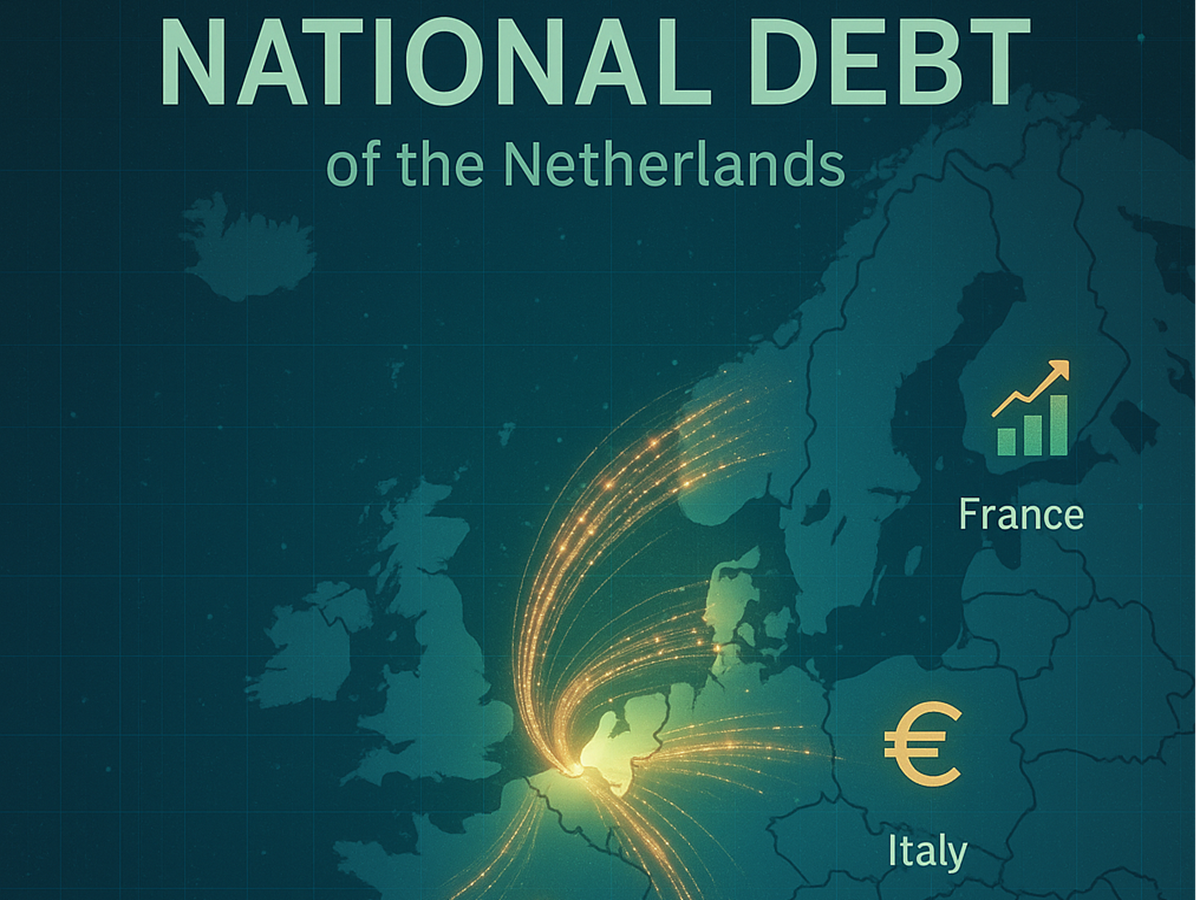Germany’s Debt Paradox: How Fiscal Discipline Became an Economic Trap
Germany’s falling debt-to-GDP ratio hides a deeper problem. Bound by its strict 'debt brake' while facing urgent needs for investment, Europe’s largest economy is caught between prudence and paralysis.

By the EU Debt Map editorial team
Last updated: October 20, 2025
The illusion of strength
Germany’s public finances appear solid on paper. Its debt-to-GDP ratio has fallen for three consecutive years, landing at 62.5% by the end of 2024. Yet the country’s total public debt has actually reached a record €2.69 trillion. What looks like fiscal progress is, in reality, an optical illusion.
High inflation has swollen nominal GDP, shrinking the ratio without reducing the underlying debt. Economists call this inflationary deleveraging—a statistical trick that makes governments look healthier even as their budgets remain under strain. Germany’s apparent fiscal discipline is being propped up not by policy, but by prices.
Explore Germany’s debt in real time at EU Debt Map: Germany.
The constitutional straightjacket
At the heart of Germany’s financial debate lies a single phrase: die Schuldenbremse—the debt brake. Introduced into the constitution in 2009 and inspired by a post-war fear of inflation, the rule caps the federal government’s structural deficit at just 0.35% of GDP and forbids states from borrowing at all. For years, it was hailed as a symbol of prudence. Today, critics see it as a straitjacket.
That tension exploded in 2023, when the Constitutional Court blocked the government’s attempt to redirect €60 billion in unused COVID-19 funds toward climate and transformation projects. The verdict not only blew a hole in the federal budget—it exposed a deeper contradiction: Germany’s fiscal orthodoxy is colliding with its economic reality.
Investment hunger vs. fiscal restraint
Germany’s economy urgently needs massive investment—in energy transition, digital infrastructure, rail and road modernization, and defense. Yet within the narrow confines of the debt brake, financing those projects means either raising taxes or cutting social programs, both politically toxic options.
The IMF projects growth of just 0.2% for 2025, the lowest among advanced economies. The country’s export-driven model is faltering, and higher interest rates are making debt service more expensive. Meanwhile, the ECB’s withdrawal from quantitative easing means Berlin must now sell its bonds to private investors—who demand higher yields.
The political crossroads
In pure numbers, Germany’s €2.69 trillion debt is manageable for an economy of its size. The true challenge is political: choosing between a rigid interpretation of fiscal virtue and the flexibility required for renewal.
Many economists now warn that sticking to the debt brake risks a decade of underinvestment and slow decline—an outcome more dangerous to fiscal stability than temporary, targeted borrowing. The paradox is clear: a rule designed to protect the future may now be preventing it.
Explore Germany’s debt in real time at EU Debt Map: Germany.
About the author
EU Debt Map Editorial Team
About us · firenature23@gmail.com
Sources: Eurostat public-debt data (Q1 2025), German Finance Ministry reports, IMF World Economic Outlook, Bundesverfassungsgericht decision (2023).
More articles
Related EU debt and fiscal insights to explore next.

20 Nov 2025
Ranked: The European Countries Where Every Citizen Owes Over €50,000
Forget the Debt-to-GDP ratio for a moment. When we look at the raw debt burden per citizen, a new and surprising map of Europe emerges. We rank the EU-27 by debt per capita.

11 Nov 2025
Can the US Handle More Debt Than Europe?
Several EU countries are already above 100% debt-to-GDP, just like the United States. Yet markets treat US debt very differently. This article explains why.

07 Nov 2025
Europe's Trillion-Euro Question: When Is National Debt an Investment?
As Europe faces the colossal costs of the green and digital transitions, the old rules of austerity are being challenged by a new logic: borrowing not for consumption, but for survival and future growth.

05 Nov 2025
The 'Swedish Wonder': National debt is falling and the live tracker is green
In an EU where most national debts are rising, Sweden is doing the opposite. With a debt ratio of just 34% and a declining counter, we look at how the 'top of the class' manages this outside the Eurozone.

01 Nov 2025
Ticking Up by €118/Second: Is the Netherlands Still Europe's 'Frugal' Leader?
The Dutch national debt is rising by €118 every second. While its 42.7% debt-to-GDP ratio remains well below the EU limit, this live tracker reveals a more complex picture compared to its European neighbors.

25 Oct 2025
Europe’s Debt Thermometer, Q2 2025: Who’s Up, Who’s Down — and Why It Matters
New Eurostat data for Q2 2025 reveals a Europe moving in two directions: while some countries’ debt-to-GDP ratios climbed, others managed to bring them down. Here’s what’s driving the shift beneath the surface.